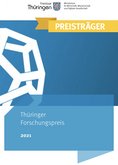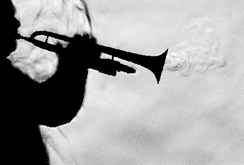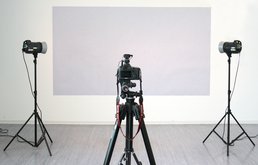
Background-oriented schlieren (BOS) method to visualize indoor airflows
The optical background-oriented schlieren (BOS) method is able to visualize indoor airflows non-invasively without disturbing the flow field. The setup consists of a structured background (black dots on a white surface), a high-resolution camera (Canon EOS 5DS R DSLR mit 50,6 MP) and a lens with very high sharpness ((ZEISS Milvus 2/135), and the object under investigation. For a better illumination, the background is lit by flashlights (two Elinchrom ELC Pro HD 1000).
BOS visualizes differences in densities of fluids due to differences in temperature or pressure. For light rays, these density gradients cause refractive index gradients that can be detected by BOS. To capture the schlieren, the object of interest, which causes the density gradient (phase object), is placed in front of a structured background. The camera records the virtual displacement of the background, which occurs due to the phase object. To evaluate the density gradients, a measuring image with the phase object (flow-on) is taken first. Subsequently, a reference image is taken that only shows the background without the disturbing flow (flow-off). When these two images are compared, a certain pixel on the reference image appears at a different location compared to the measuring image. Hence, these virtual displacements show the density gradient under investigation.
The simple setup, the almost unlimited size of the measurement field, and the relative ease of measurements are significant advantages of the BOS technique.
The background-oriented schlieren system and the schlieren imaging system were awarded with the Thuringian Research Award 2021 in the category "Applied Research".
Contact:
Lia Becher M.Sc.
Phone: +49(0)36 43/58 48 24



